Emerald Ash Borer
What is the Emerald Ash Borer (EAB)?
Emerald Ash Borer is a devastating boring beetle that can rapidly spread, attack, and kill ash (Fraxinus spp.) tress. EAB has been in Colorado since 2013.
Before and after: A road in Toledo, Ohio before and after EAB came through: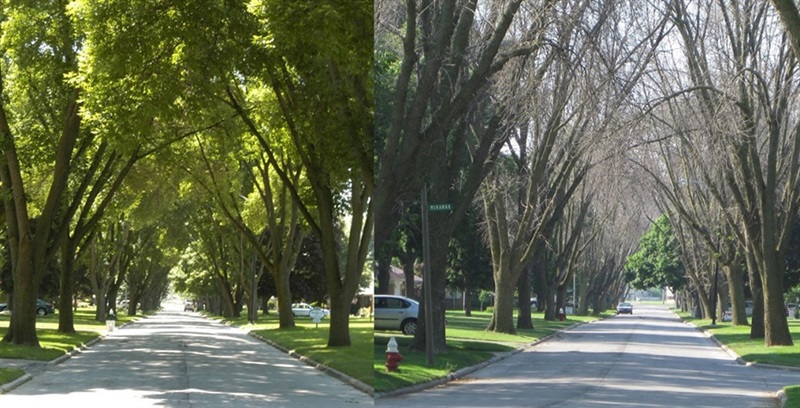
Why does EAB matter?
EAB kills any untreated ash tree that it attacks. Since ash trees are such a large part of the urban tree canopy throughout the Front Range, this can have a devastating impact. Ash are estimated to make up around 15% (~45,000 trees) of all trees in Littleton. Most ash trees are on private properties and within HOAs. The larval stage of EAB feeds under the bark of trees, cutting off the flow of water and nutrients. Infested trees become structurally unsound and gradually die within just a few years.
Identifying ash trees
EAB only attacks ash trees. Therefore, the first step to prevention is correctly identifying your ash tree.
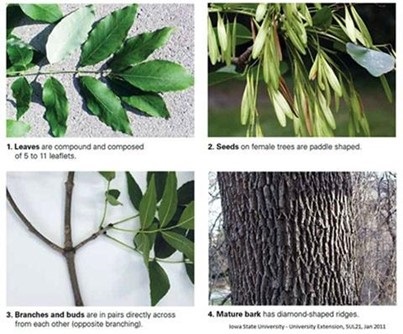
Not sure about your tree’s id? Send photos of your tree with close ups of leaves, twigs, and bark to the Colorado Extension office (the more photos you can provide the better).
What are my treatment options?
We encourage you to treat any of your healthy ash trees!
Here is a great resource for learning about emerald ash borer treatment options. Four insecticide treatments are available. The frequency of the application will depend on the product but will range from one or two years. The options available are all systemic insecticides meaning the roots will uptake the product. It will take time for the product to thoroughly move through the tree, and it is important to keep the tree well-watered during this time.
All EAB insecticides require a certified pesticide applicator for application treatments except for Imidacloprid which can be purchased by consumers at hardware and garden centers. The City does not recommend homeowners applying store bought Imidacloprid. The formula is not as strong as the regulated chemical option and the efficacy rates are underwhelming.
When Hiring a Tree Care Professional:
- Ask for credentials. Arborists should have a current State of Colorado Pesticide Applicator License, should be insured, and ideally be certified through the International Society of Arboriculture.
- Don’t be afraid to ask for a specific contract of work and customer references.
- Do your research and get quotes from multiple companies.
For tree pruning and removals, The City of Littleton requires the use of certified arborists.
Should I treat my ash trees?
If you leave your ash tree untreated and it gets attacked by the borer, it will die.
We love trees! Trees provide shade, oxygen, soil stability, runoff control, clean air, wildlife diversity, and general beauty and happiness! However, it is important that you know that protecting your ash tree is an ongoing investment. The City of Littleton is prioritizing saving 1/3 our largest, healthiest ash trees for long- term treatment.
If your ash tree is in an undesirable location or not in good health, we do not recommend investing in treating it, but rather removing and replacing your tree.
Note: It is safer, easier, and more affordable, for an arborist to remove a tree prior to it showing decline symptoms from EAB. The pest compromises the structural integrity of the tree.
Replace your tree with a new species. Care for it, watch it grow, and know that you have had an impact in diversifying Littleton’s canopy for many generations to come! Plant More Trees!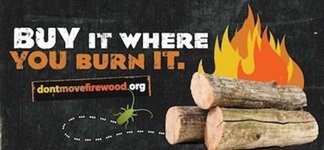
How did EAB get to the Front Range?
In Colorado, EAB was first detected in Boulder (2013) due to the careless moving of firewood from a contaminated region. It is important to burn wood locally, do not move firewood! You never know what pest you might be spreading.
How many ash trees does Littleton have?
The City of Littleton’s total ash population is estimated at around 45,000 trees with the majority of those located on private property or natural areas/ open space.
South Suburban Parks and Recreation (SSPR) is responsible for managing all trees in the Littleton’s public parks. They maintain approximately 1500 trees within the Littleton city limits.
The City of Littleton's forestry department maintains approximately 570 ash trees, located primarily in streetscapes and rights of ways.
How can I tell if I have EAB?
Determining the presence of EAB is often difficult. Symptoms include sparse leaves or branches in the upper canopy, vertical splits in bark with S-shaped galleries beneath, smaller leaves at branch tips, D-shaped exit holes on branches, and epicormics shoots growing from the main trunk or near the center of the tree. It is important to note that there are a variety of boring insects that produce exit holes in ash trees. These other pests (lilac ash borer, long horned beetle, etc.) leave a circular exit hole and are overall less detrimental to the trees decline.
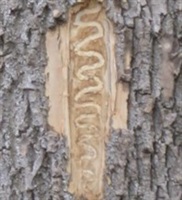
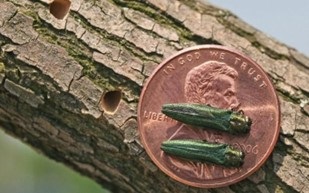
Left image: EAB larvae create distinct "S-shaped" galleries under the bark of ash trees
Right image: Adult borers are about 1/2 inch in length and exit the branches through "D-shaped" exit holes
Not all ash tree pests are the emerald ash borer. The lilac ash borer is another common pest that is native and typically less devastating. It creates round, larger exit holes compared to the slightly smaller d-shaped holes of the emerald ash borer. Additional information and visual examples can be found here.
Who can I contact for more information?
Additional resources